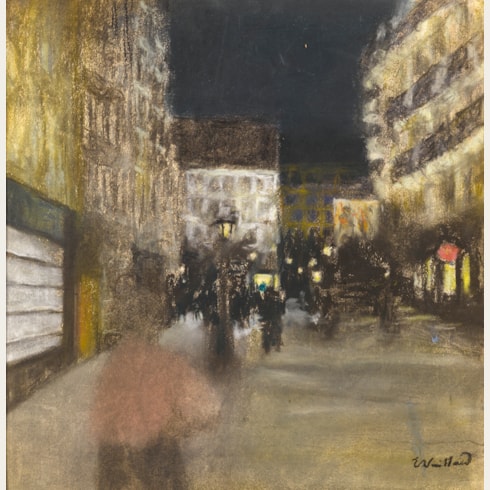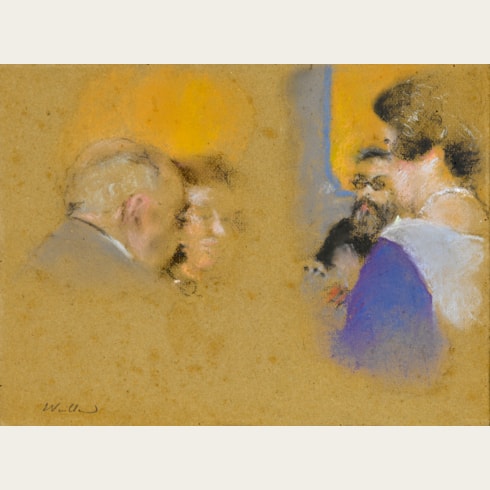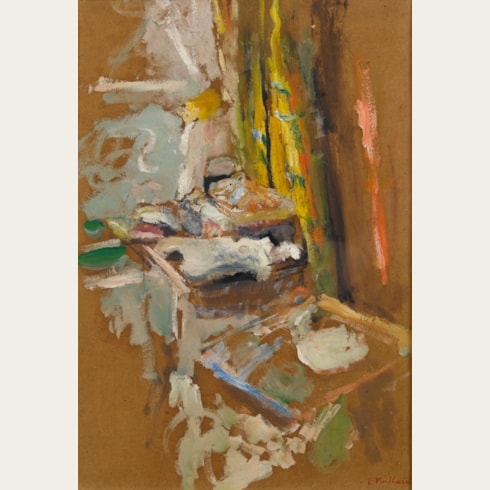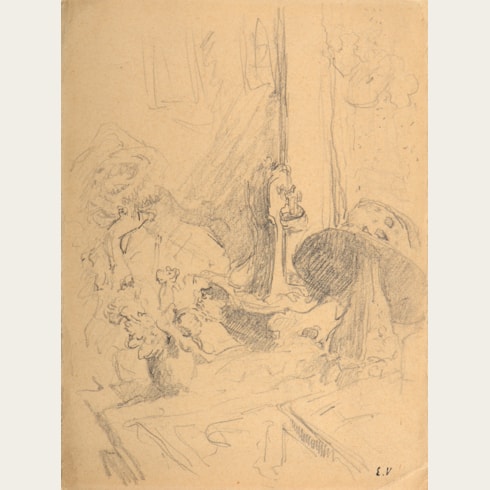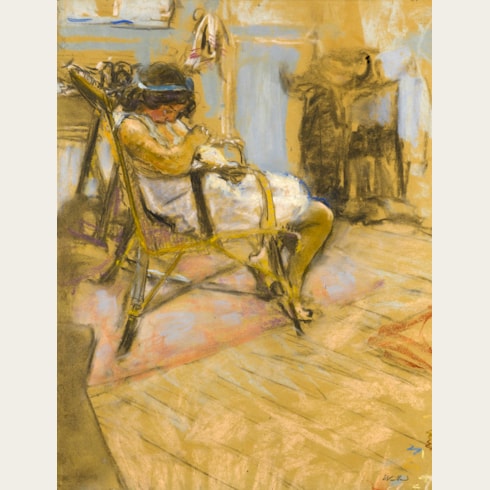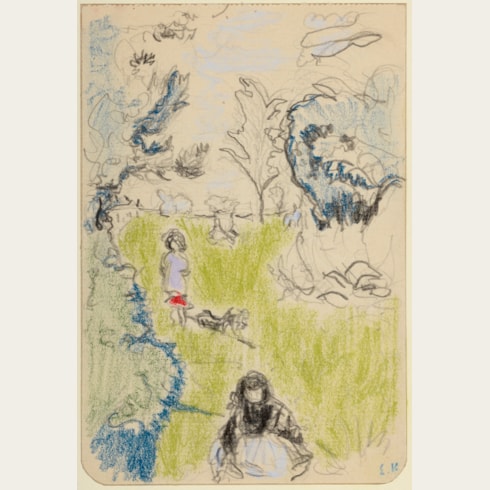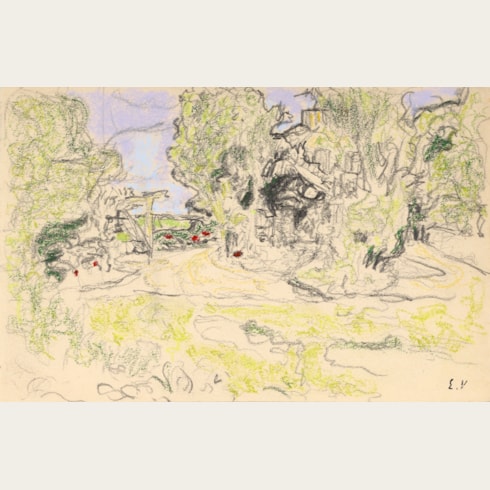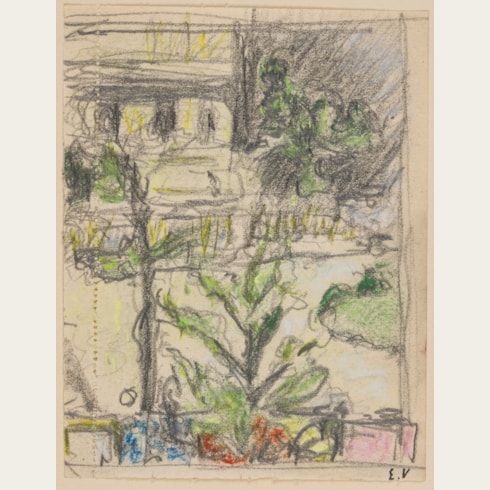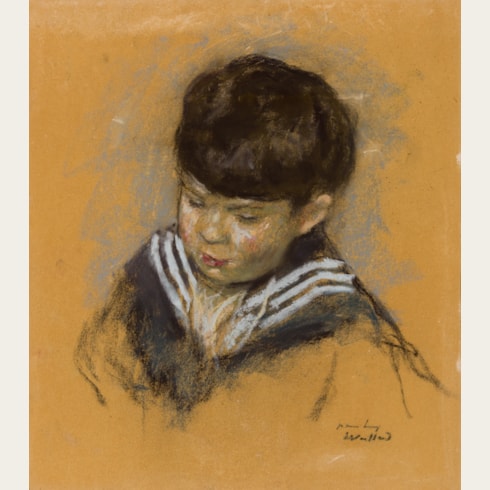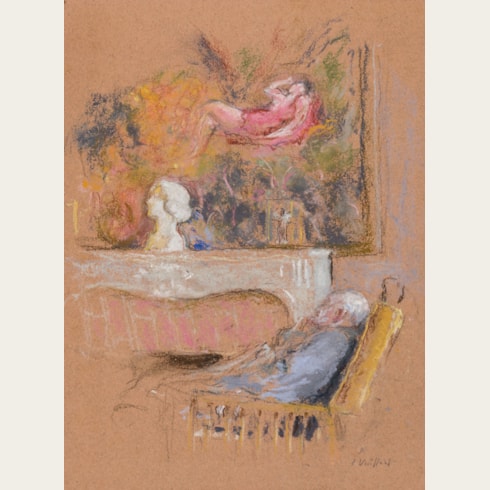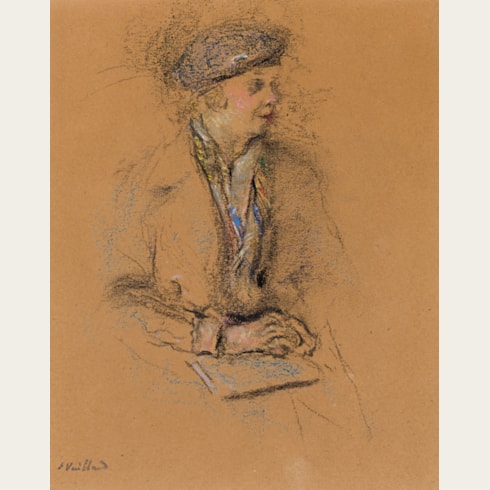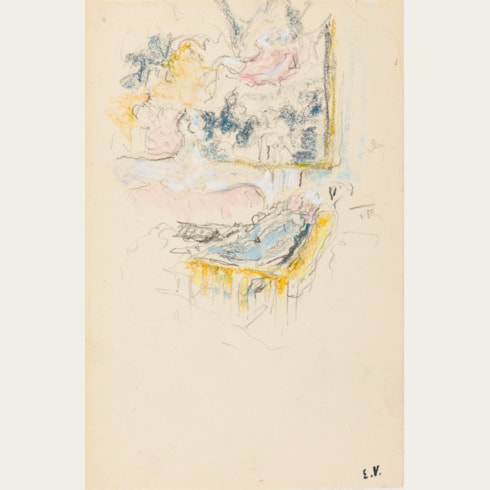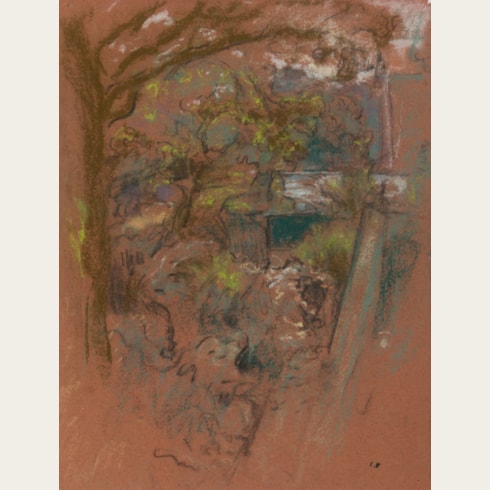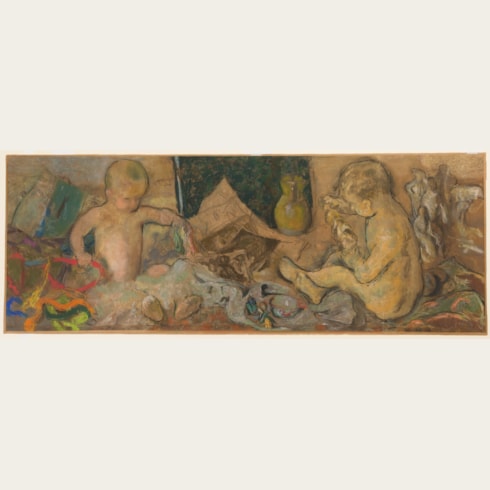Edouard VUILLARD
(Cuiseaux 1868 - La Baule 1940)
Model on a Green Sofa (Modèle sur un sofa vert)
Signed E Vuillard at the lower right.
544 x 500 mm. (21 3/8 x 19 3/4 in.)
Vuillard's domestic interior scenes, which usually include members of his family and close friends, 'are not intended as portraits, nor are they genre paintings in the true sense of the term. Rather, they are evocations of the private world of the artist's personal experience...[and] provide a tantalizing view into a cloistered and rarefied world occupied almost entirely by women...Vuillard's women are perpetually absorbed in their occupations and, with only rare exceptions, remain totally unconscious of the presence of the artist and the gaze of the viewer.'
The woman in the present pastel may possibly be identified as Lucie Belin, also known as Lucie Ralph, whom the artist met in 1914. A beautiful young dressmaker's apprentice and aspiring actress, she began posing for Vuillard soon after they met, and by 1915 was to become his mistress. As Guy Cogeval has written, she 'may well have been the love of [Vuillard's] life…No one seems to have been aware of the intensity of their romantic but stormy relationship.'
As has also been noted, 'Though she posed for Vuillard from the very beginning, she is increasingly present in the form of almost daily mentions in the artist's Journal for 1915, the year in which Vuillard painted numerous portraits of her in his boulevard Malesherbes studio. Not only was Lucie Belin one of Vuillard's most assiduous models, she was also his lover and quite one of the most important women in his life, judging by the number of times he mentions her not only in his Journal…but also...in the photographs he took of her between 1915 and 1916. No other person was photographed by Vuillard with such manifest passion…The many photographs Vuillard made of the beautiful Lucie show that she is not just a subject for compositions, but the object of a passion seldom experienced by the painter, which reached its height between June and October 1915. By then he was seeing her almost daily…For the moment, Vuillard was enjoying a period of intense happiness with Lucie. Her youth, her simplicity, her real beauty captivated him. He seems to have been particularly taken with her outfits, which she cut and sewed herself, and by her large round hat.'
At the start of his career, Edouard Vuillard joined a group of young artists - including Maurice Denis, Paul Sérusier, Pierre Bonnard and Kerr-Xavier Roussel - who called themselves the Nabis and were united by a desire to develop a new, more expressive pictorial language, inspired by the work of Paul Gauguin. In the 1890's, Vuillard began receiving a number of private commissions for wall panels intended to decorate the rooms of private houses. This was a genre in which he was to become very successful, and between 1892 and 1901 he painted a number of these large-scale panneaux décoratifs, almost all the result of commissions from a small group of mutual friends and enlightened collectors. Vuillard’s work of this type remained largely unknown to the public at large until several panels were exhibited at the Salon d’Automne in 1905.
In the early years of the new century, enjoying the fruits of a commercial arrangement with the Galerie Bernheim-Jeune, Vuillard began expanding his repertoire of decorative panels and small, intimiste domestic interiors to include portraits and landscapes. Although his work as a peintre-décorateur was largely confined to private homes, he did receive a handful of public commissions, including the decoration of the foyer of the newly built Théâtre des Champs-Elysées in 1912. The later years of his career found Vuillard saw mainly as a portrait painter, often depicting his sitters within an interior setting. He rarely exhibited in public after 1914, and it was not until a large retrospective exhibition of his work was held at the Musée des Arts Décoratifs in Paris in 1938, two years before his death, that interest in Vuillard was renewed.
As a modern scholar has noted, ‘Vuillard was in many ways the supreme graphic artist among the Nabis. He drew throughout his life, indeed daily...’ From around 1900 onwards he used mainly pastel for his drawings, and came to master the subtlety and vibrancy of this challenging medium. In one of the first monographs on the artist, the critic and art historian Claude Roger-Marx wrote that, ‘Vuillard often found expression by means of pastels’, and he made more extensive use of the pastel medium than perhaps any French artist since Degas in the previous generation. Pastel was to become an essential part of Vuillard’s working process until the end of his career, and was used for landscape and figure studies, compositional drawings, still life subjects and as preparatory studies for portraits.
Provenance
Literature
Exhibition





